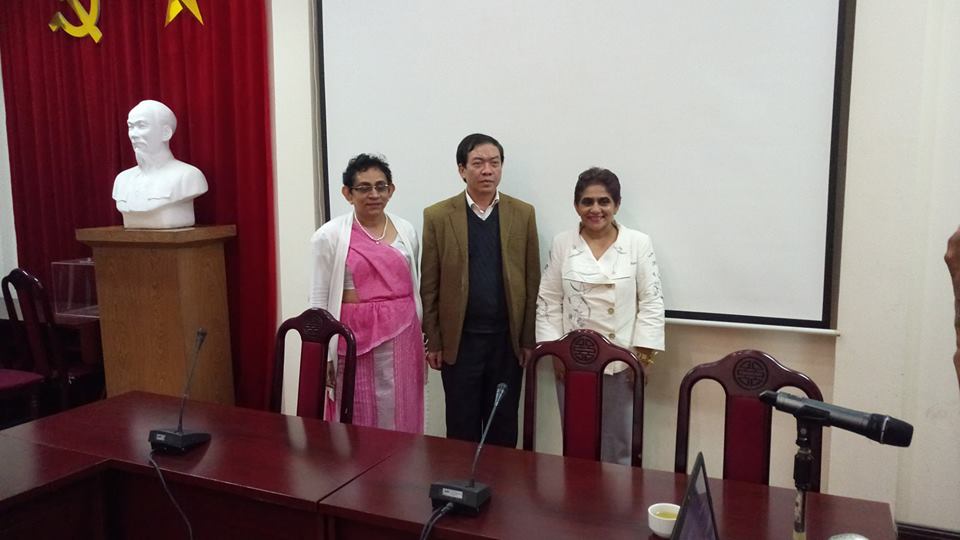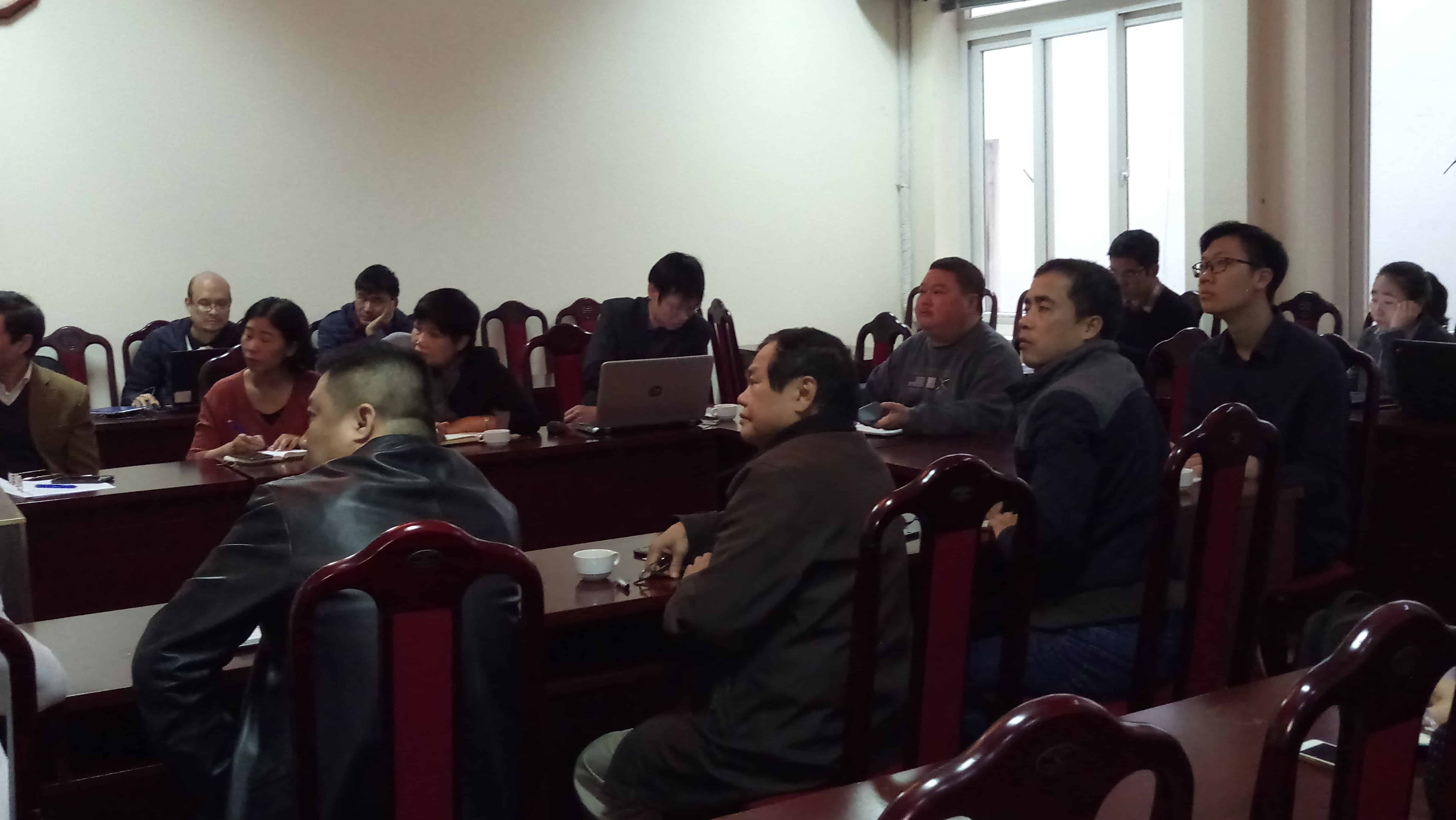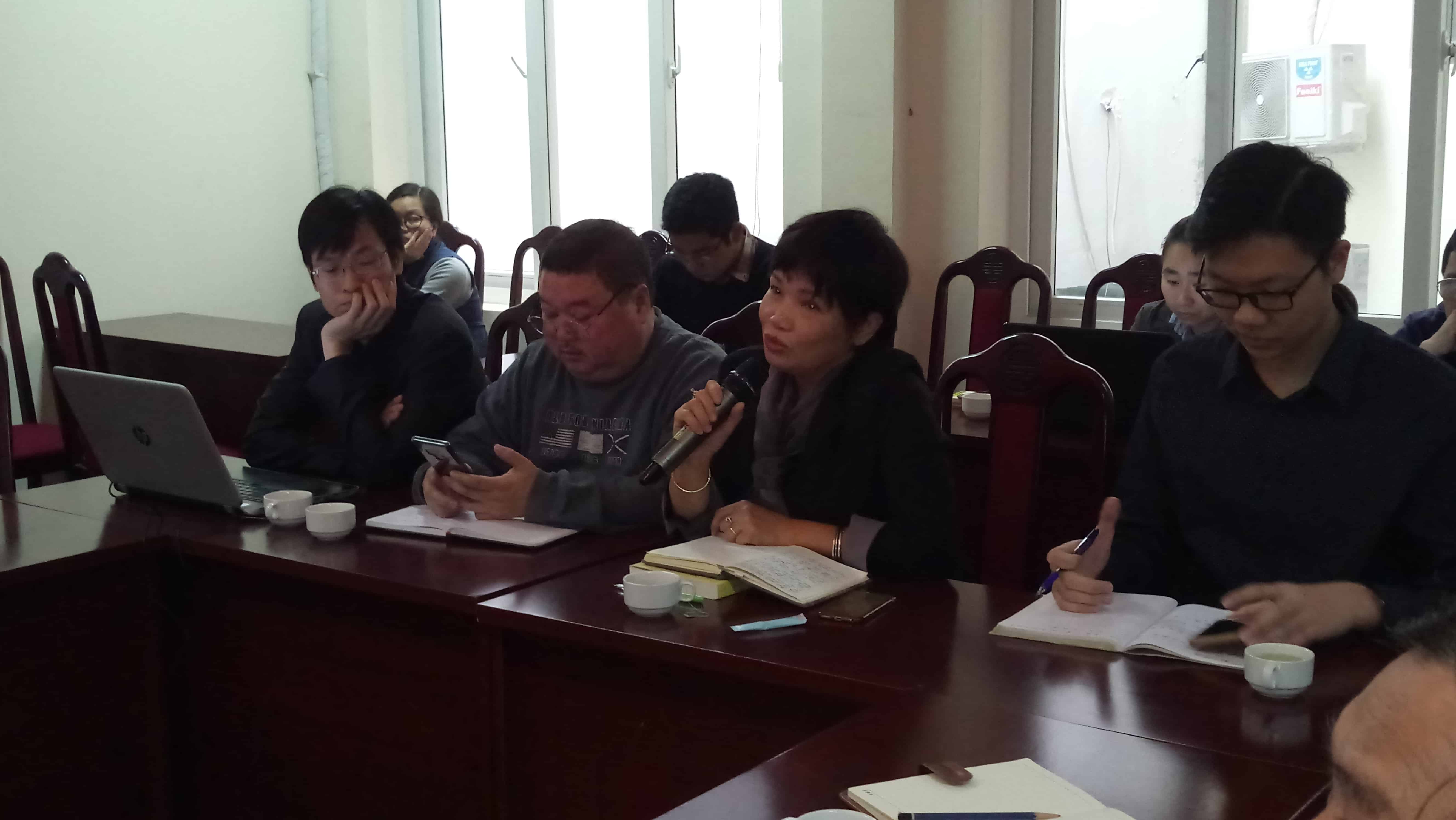
A lecture on “Buddhist Art and Archaeology of Sri Lanka and the Silk Road” was conducted recently by Sri Lankan archaeologist Ms. Bindu Urugodawatte at the Institute of Archeology of the Viet Nam Academy of Social Sciences. It was attended by faculty and students of the Institute and other enthusiasts from the academic world in Ha Noi.
Bindu is an archaeologist trained in China (Peking University) and USA (Harvard University) and with much diverse experiences in the fields of archaeology, Buddhist art and architecture, heritage management, etc.
She used a power-point presentation with many images comparing influences in Sri Lankan Buddhist art from the west and east, such as the presence of cupid, winged animals, dragons, and other mythical animals from ancient Greece, Rome, Central Asia and China using iconographic details. It was interesting to note the similarities of artistic manifestations in remote parts of north western China in Kizil and Sri Lankan Buddhist art. Her lecture presented many possibilities for future research activities between Sri Lanka and Viet Nam using shared Buddhist iconography.
The presentation was followed by an interesting Q and A session, as Vietnamese were not familiar with the development of Buddhist art and archaeology in Sri Lanka, especially iconographical similarities between the two countries.
The origin and the route of spread of certain designs and images such as the “Makara Thorana” (Dragon Archway in Buddhist and Hindu art) was discussed in detail and Ms. Urugodawatte stated that she is still researching on the origin as it is present in China, India, Sri Lanka and South East Asia and invited Vietnamese archaeologists to join in to research specially the My Son World Heritage site and other sites present in Viet Nam as well as neighbouring Laos and Cambodia. The transition of religious sites from Hinduism to Buddhism and wise versa in South Asia and south East Asia also provides interesting dynamics, she added.
Later, there was also discussions revolving round climate change and plant resilience over centuries in both Sri Lanka and Viet Nam, which have been prone to wrath of climatic changes over the centuries. In fact, the Embassy has already taken the initiative to link the Institute of Archaeology of Viet Nam and the Postgraduate Institute of Archaeology of Sri Lanka for joint research on these lines.
At the end of the presentation, Embassy provided refreshments and tea.






